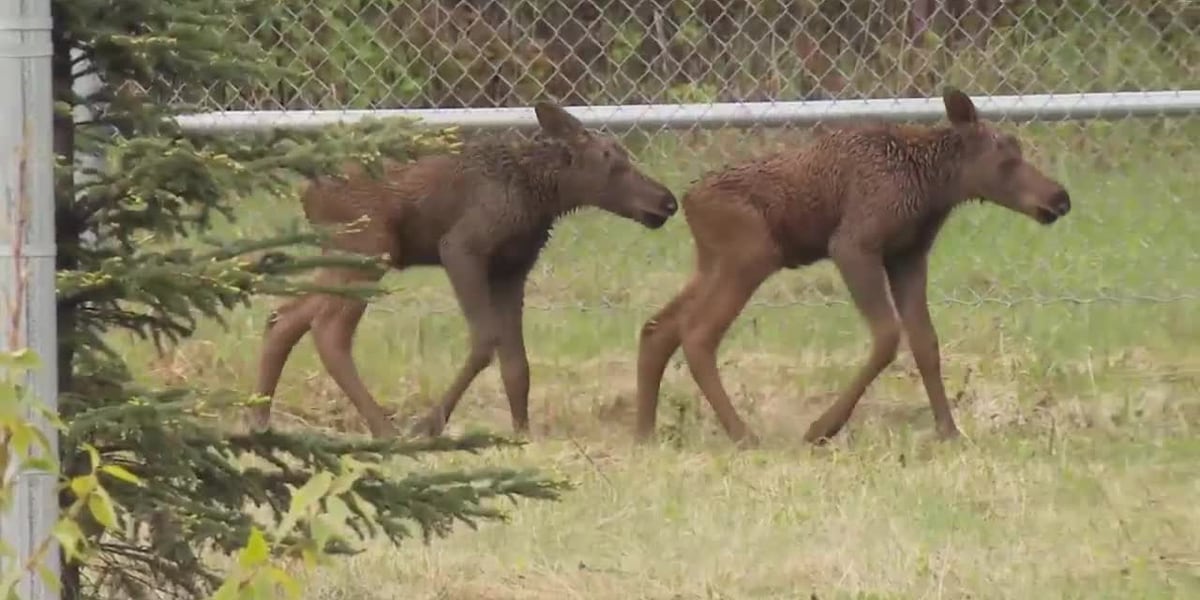
FAIRBANKS, Alaska (KTVF) -Spring has sprung in Alaska which means it is “baby season” for wildlife.
The Humane Society of the United States (HSUS) has advice on how to properly handle baby animals you may encounter outside.
Alaskans often come across animals in the wild and some may be unsure if they need help or not.
Whether it is an abandoned young moose calf or a litter of puppies in your backyard, there are necessary steps to take to determine if action is needed.
“During the spring and summer, both animal shelters and wildlife rehabilitators are often overwhelmed with baby wild animals brought in by the public,” said Lynsey White, Director of Humane Wildlife Conflict Resolution at HSUS. “So while it’s crucial to take action if an animal genuinely needs help, it’s equally important to assess the situation first to ensure intervention is necessary.”
There are questions that can be asked to help determine if a wild animal needs help which include:
- Was the animal brought to you by a dog or cat?
- Is the animal shivering?
- Is there a dead parent nearby?
- Are there signs of an injury?
- Do their eyes look clear?
- Do both wings or legs look similar?
- Is the bird featherless or nearly featherless and on the ground?
HSUS recommends contacting a local wildlife center or wildlife rehabilitator for instructions.
In the Fairbanks area, ideally you should contact The Alaska Department of Fish and Game (ADF&G) at (907) 459-7206 for further instructions.
The ADF&G asks that you submit a wildlife encounter report on their website at adfg.alaska.gov if you witness a lone calf or cub for a long period of time or have a safety concern.
The ADF&G also advises to leave orphaned mammals alone because their mother is often nearby. If they truly are orphaned ADF&G says it is best to leave them alone because attempting to feed or pick them up, unless you have a permit, is illegal and may result in a fine.
Determining if an animal needs help depends on their age, species and behavior. Below are further tips on how to assess different situations depending on the animal.
If you encounter a baby bird that is clearly in immediate danger, you are asked to contact ADF&G.
If the baby bird is featherless and appears to have fallen from their nest then it is advised that you put them back if it is safe to do so.
If the nest is unreachable try using a small basket as close to the original nest as possible.
Woven stick or wicker baskets work best because they closely resemble a nest.
If the parent bird does not return to the new nest, contact ADF&G.
Baby deer, also known as fawns, are commonly assumed to be orphans because their mother only visits with them a few times a day. So, if they are calm and quiet then that is an indication that their mother is nearby and they are content.
The only time you should contact ADF&G is if the baby deer is lying on their side crying or wandering.
If you encounter a baby squirrel that is following people, that could mean their mom is gone. If that is the case you can contact ADF&G because the baby may need proper care. If a baby squirrel has fallen from their nest, first wait for the mother to claim them and keep your pets away.
If you are unable to reach ADF&G, the next step would be to call local veterinary clinics and humane societies.
Copyright 2024 KTVF. All rights reserved.
